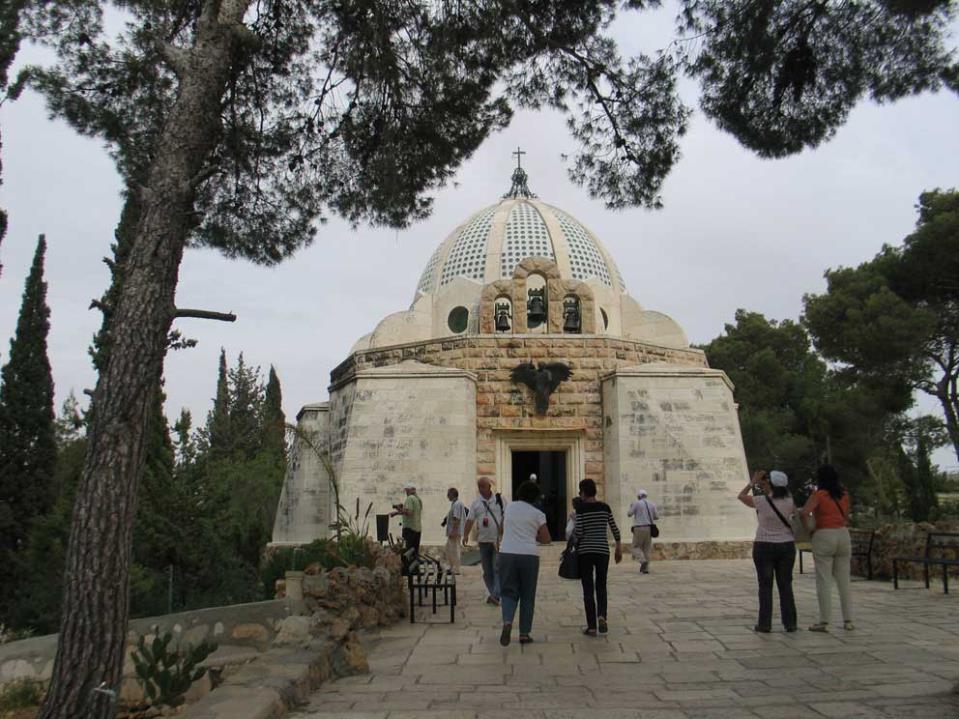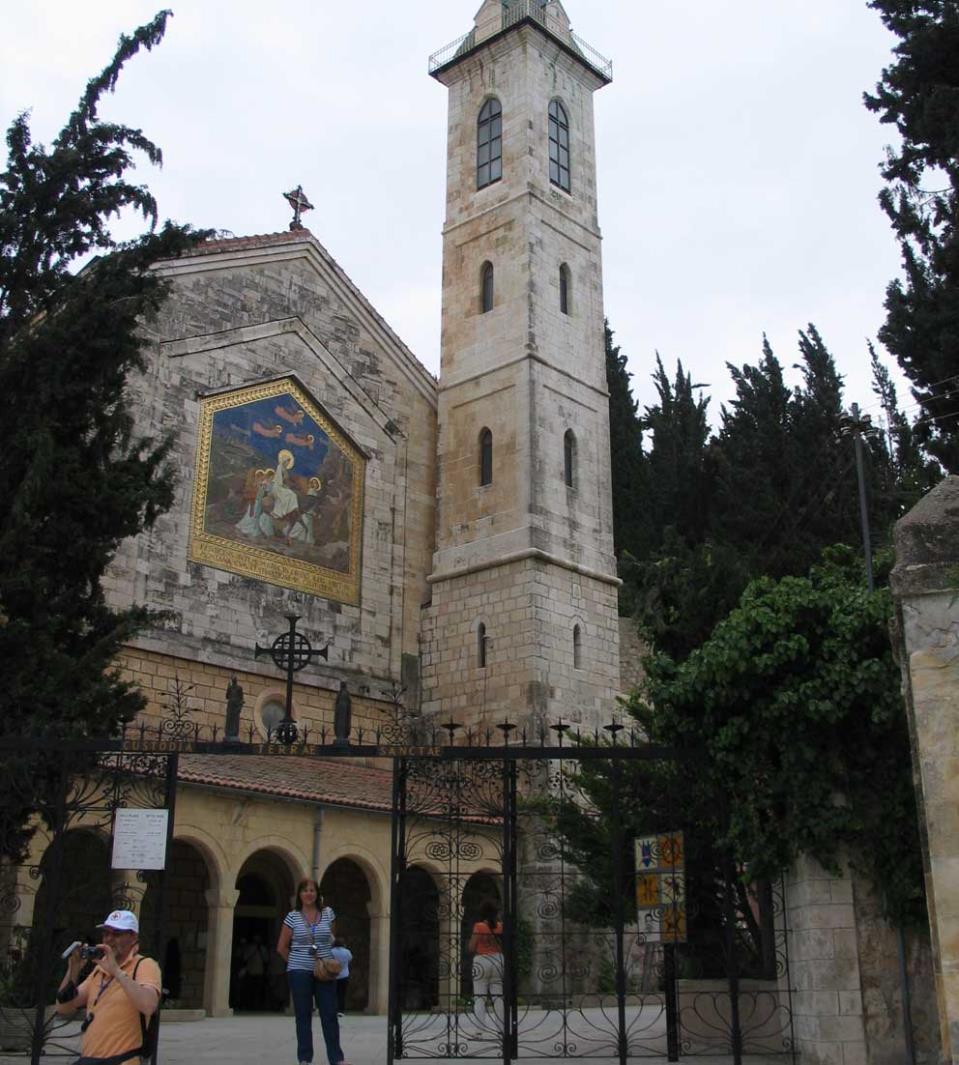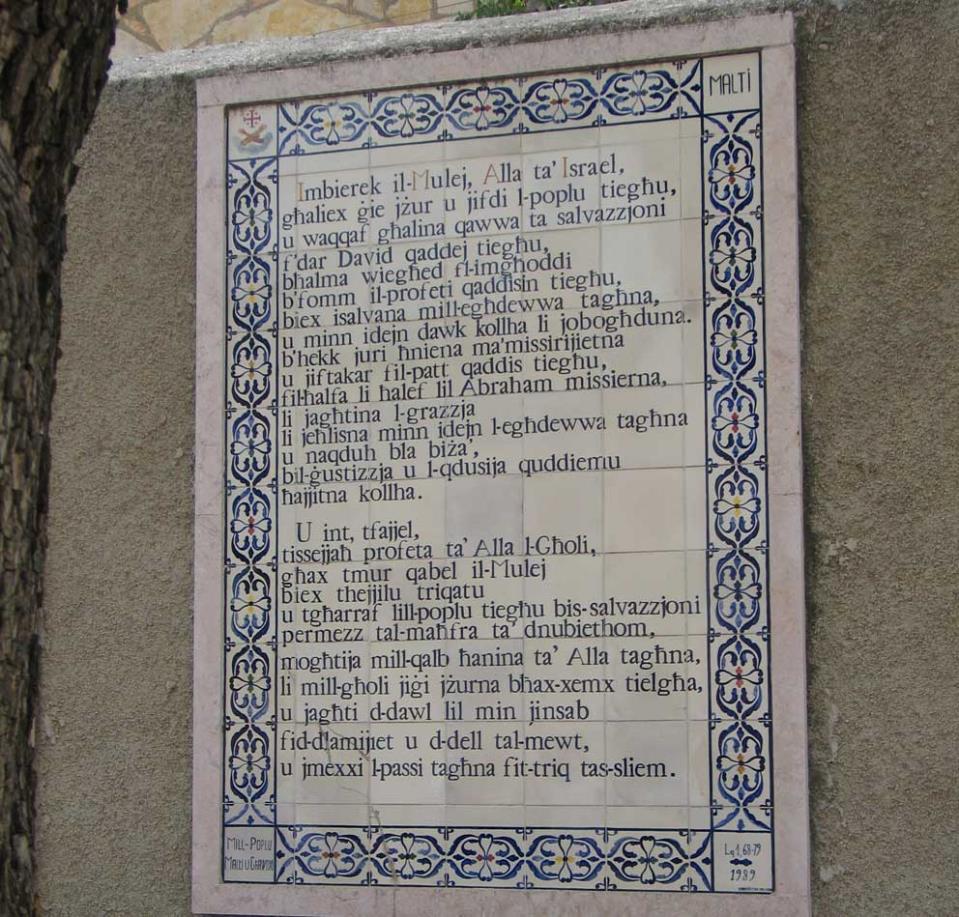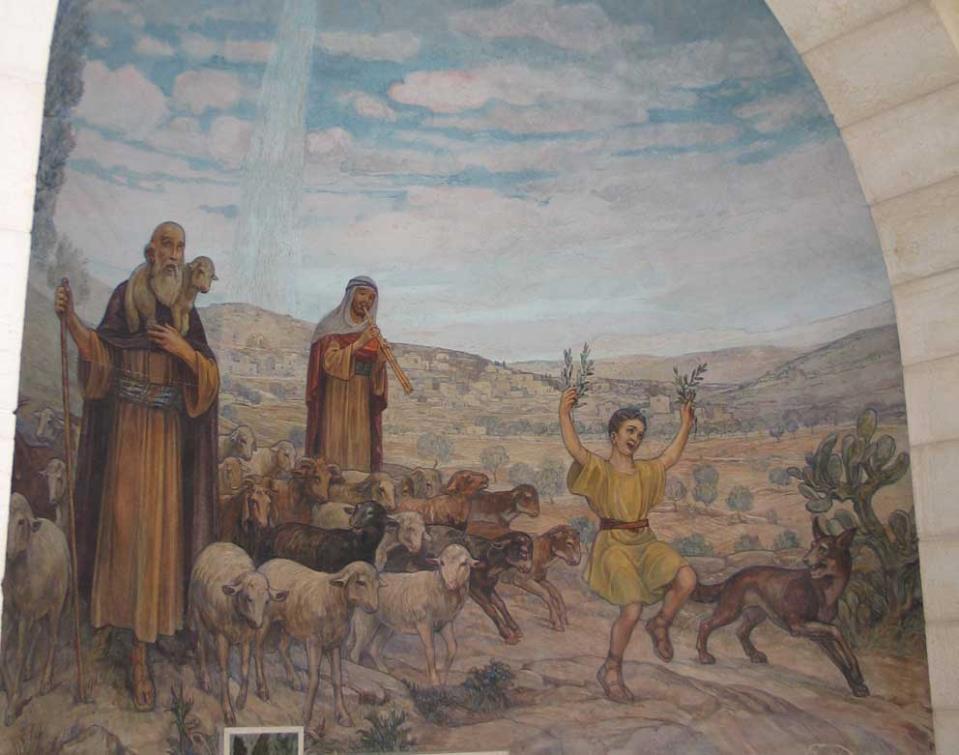Where Baby Jesus was born
On Monday 5 May, we woke up very early, at 5.00. Sometime later we walked a few metres to the left of our hotel and entered the Basilica of the Nativity. We went down the Nativity cave; each of us knelt down and kissed the star which is placed where Jesus is believed to have been born. There, Fr Anthony and Mgr Bezzina concelebrated 'Christmas Mass'.
The basilica is found in Palestine. It was originally commissioned in 327 AD by Constantine and his mother Helena over the site which is still traditionally considered to be located over the cave that marks the birthplace of Jesus of Nazareth. The original basilica was completed in 339 AD and destroyed by fire during the sixth century. A new basilica was built in 565 by Justinian, the Byzantine Emperor.

The site of the church has had numerous additions since this second construction, among which its bell towers. Because of its cultural and geographical history, the site holds a prominent religious significance to both Christians and Muslims.
The church is a World Heritage Site, and was the first to be listed under Palestine by UNESCO. The site is also on UNESCO's List of World Heritage Sites in Danger.
The Milk Grotto
Next on our programme was a visit to the Sanctuary of the Milk Grotto located around the southeast corner of the Basilica of the Nativity. The grotto was converted into a chapel, irregular in shape, and hollowed from a soft rock cave.
According to tradition, the Holy Family hid in this cave before they escaped to Egypt. Meanwhile, while the Virgin Mary nursed baby Jesus there, drops of her milk fell on the ground turning the rock white. Many believe that the rock is the source of miraculous power with regards to fertility. Couples who have difficulty conceiving drink a bit of the rock's powder mixed with water and pray for the intercession of the Virgin Mary.
On the left of the chapel there is a room on the walls of which hang photos of babies and testimonial letters from parents attesting to the powers of the chalky sediment they had scratched from the cave walls, mixed with water, and drank. [At this moment in time the miraculous attribution to the rock powder from the cave where St Paul is traditionally held to have lived during his stay in Malta came to mind. So much has been written and published about this belief in Malta.]
The first sanctuary was built here before the fifth century AD, most likely by Santa Paula. Remains of the ancient mosaic floor are still visible. The present chapel was built by the Franciscans in 1872. On the steps descending to the underground chapel, there are beautiful mother-of-pearl decorations engraved in the walls. Deeper inside the grotto, there is a unique painting of the Virgin Mary nursing a child.
Lately, nuns have come and taken over the sanctuary and organize Adoration of the Holy Host exposed, 24 hour a day, the whole week, all the year round. From behind glass we witnessed a sister in adoration.

A procession
After some time site seeing and shopping in Bethlehem, we entered again the Nativity Basilica and took part in the 'daily' procession with the recitation of prayers along the way. It started from inside the church and lead down to the Nativity Cave.
Ein Karem
Afterwards, we drove to Ghajn Karem or Ein Karem [Hebrew: עַיִן כרֶם, literally 'Spring of the Vineyard', and Arabic: عين كارم Ein Kārem or Ayn Karim] - an ancient village now a neighbourhood in southwest Jerusalem. It was depopulated during the Arab-Israeli War in 1948. According to Christian tradition, John the Baptist was born in Ein Karem, leading to the establishment of many churches and monasteries. This place attracts three million visitors a year, one-third of them pilgrims from around the world.
Mary visits Elizabeth
In a high and humid temperature, we walked and went up a steep flight of steps, with a panoramic view of the green valley beneath us on the right, to visit the Sanctuary of the Visitation [formerly Abbey Church of St John in the Woods]. On the main door, beneath a mosaic depicting Holy Mary on a mule, accompanied by angels, on her way to her cousin Elizabeth, one reads Latin line thirty nine, from Luke 1, for: ' At that time Mary got ready and hurried to a town in the hill country of Judea'. [The following, line forty states: 'where she entered Zechariah's home and greeted Elizabeth.']
In the interior, beautiful frescoes depicting episodes from the life of Mary embellish the high wall on the right hand side of the church.
Frescoes depicting angels cover the sides of the walls of the arches framing the large high windows on the left. On the wall behind the main altar, a fresco shows young 16 year-old Mary walking alone, as if she is coming to land in the church. Opposite the main altar, on the wall at the back, stands another large painting, this time of a strikingly stylized Madonna with baby Jesus, standing, with the world beneath her feet.
The church - designed by Antonio Barluzzi and built in 1938 - is paved with large mosaic square tile-like frames with pictures of birds, animals, leaves, and other objects, representing the world paying homage to Our Lady.

The 'Magnificat' in Maltese
Outside, on the large high wall enclosing the yard, on the right, there are affixed ceramic large frames with versions of the 'Magnificat' (Luke 1:46-55) in different languages. The Maltese version lies in the third row from top, and was put in place in the Marian year, 1954.
According to tradition, it was here that Mary met her cousin Elizabeth [mother of John the Baptist] and sang the 'Magnificat' - a song of praise and gratitude to God.
The Benedictus and Church of St John the Baptist
From the church of the Visitation we walked back, down the steps, and again uphill, passing through a narrow street with souvenir shops on both sides, until we found ourselves in a large square with ceramic frames with versions in different languages of the 'Benedictus' [also 'Song of Zechariah' or 'Canticle of Zachary'] (Luke 1:68-79). It is a song of thanksgiving uttered by Zechariah on the occasion of the birth of his son, John the Baptist. Among these, there is one with the Maltese version which was blessed by the late Bishop of Gozo Mgr Nikol Cauchi, on 19 September 1989.
At the end of the square, we went up several steps and entered the Church of St John the Baptist built on the place where the saint is believed to have been born.
Little remains of the Byzantine sanctuary which once commemorated the birth of the Baptist. However, it was rebuilt by the Crusaders, but after they left the Holy Land the sanctuary was either destroyed or fell into complete disrepair. Centuries later, the Franciscan Order purchased the site and reconstructed the church with the aid of the Spanish royal family [their coat-of-arms is located above the entrance, inside the sanctuary]. Many of the paintings are originals, drawn by Spanish artists and donated by Spanish kings. Diverse blue-and-white tiles - Spanish in style - line the enormous square pillars and cover parts of the walls of the interior of the church. Further work on the church included a new marble altar for the grotto, donated by Queen Isabella II of Spain.
Shepherds' sanctuary
In the afternoon, the coach we had with us took us to the Sanctuary of the Shepherds which was designed by Fr Antonio Barluzzi OFM [the Italian Franciscan monk and architect, known as the 'Architect of the Holy Land']. He created and restored numerous buildings and churches in the Holy Land, including the Italian Hospital in Jerusalem, the Church of All Nations in Gethsemane, the Church of the Transfiguration on Mount Tabor, a hospital in Amman in Jordan, the Church of the Beatitudes in Galilee, the Church of Visitation in Ein Karem, and the Convent of St Antony in Jerusalem.]

Three paintings
The Sanctuary stands on a rock overlooking the ruins, possibly of a Byzantine Basilica. It has a dodecagonal shape with five apses. Light penetrates the glass windows of the concrete dome and illuminates the interior like when the glory of the Lord shone around the shepherds (Luke 2:9) on the first Christmas Night. Three frescoes depict the shepherds receiving the news of the birth of Jesus, the shepherds expressing bewilderment when they visited the new-born Jesus in the cave, and the shepherds [including a boy and a dog] expressing their happiness afterwards, on their way home.
St Jerome [end of the fourth century] mentioned this place on several occasions, associating it with the Biblical Migdal-Eder [Tower of Eder or of the Flock]. The church of Jerusalem celebrated a feast-day there on Christmas Eve. And ... Bishop Arculph [seventh century], recalls the presence of the burial places of the three shepherds in the church. Before the arrival of the Crusaders, the church was destroyed but the ruins still continued to be visited by pilgrims.
Besides, during excavations, the remains of a farming settlement dating back to the first century AD [with an oil press, grottoes, and vault lined with burial niches] and a Byzantine monastery [church, courtyards, cisterns, bakery, rooms with mosaics] which flourished between the fourth and eighth centuries AD, were found.
All photos reproduced herein were taken by the author
© Joe Zammit Ciantar
[email protected]
Part 1
Part 2
Part 3
Part 4